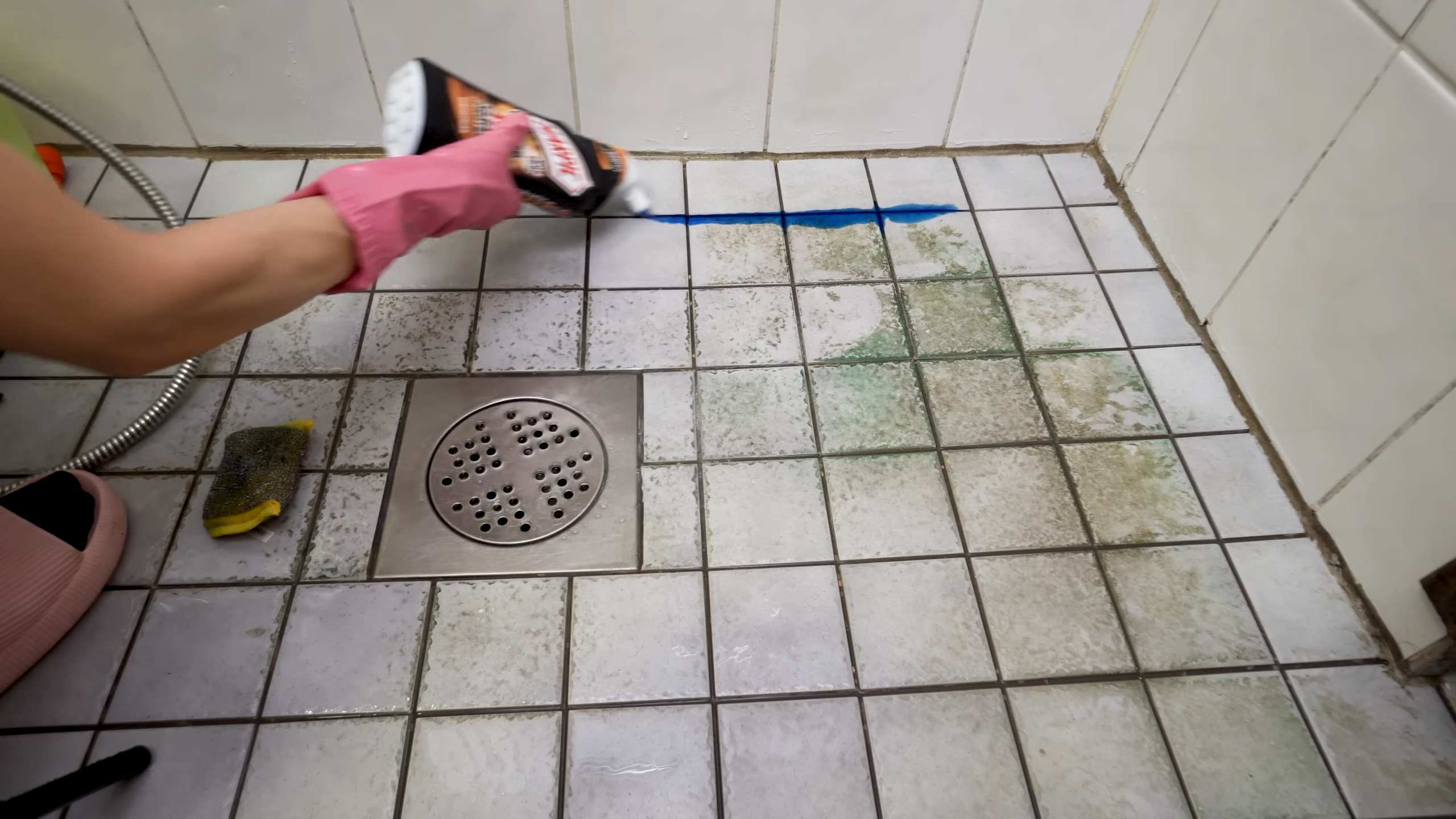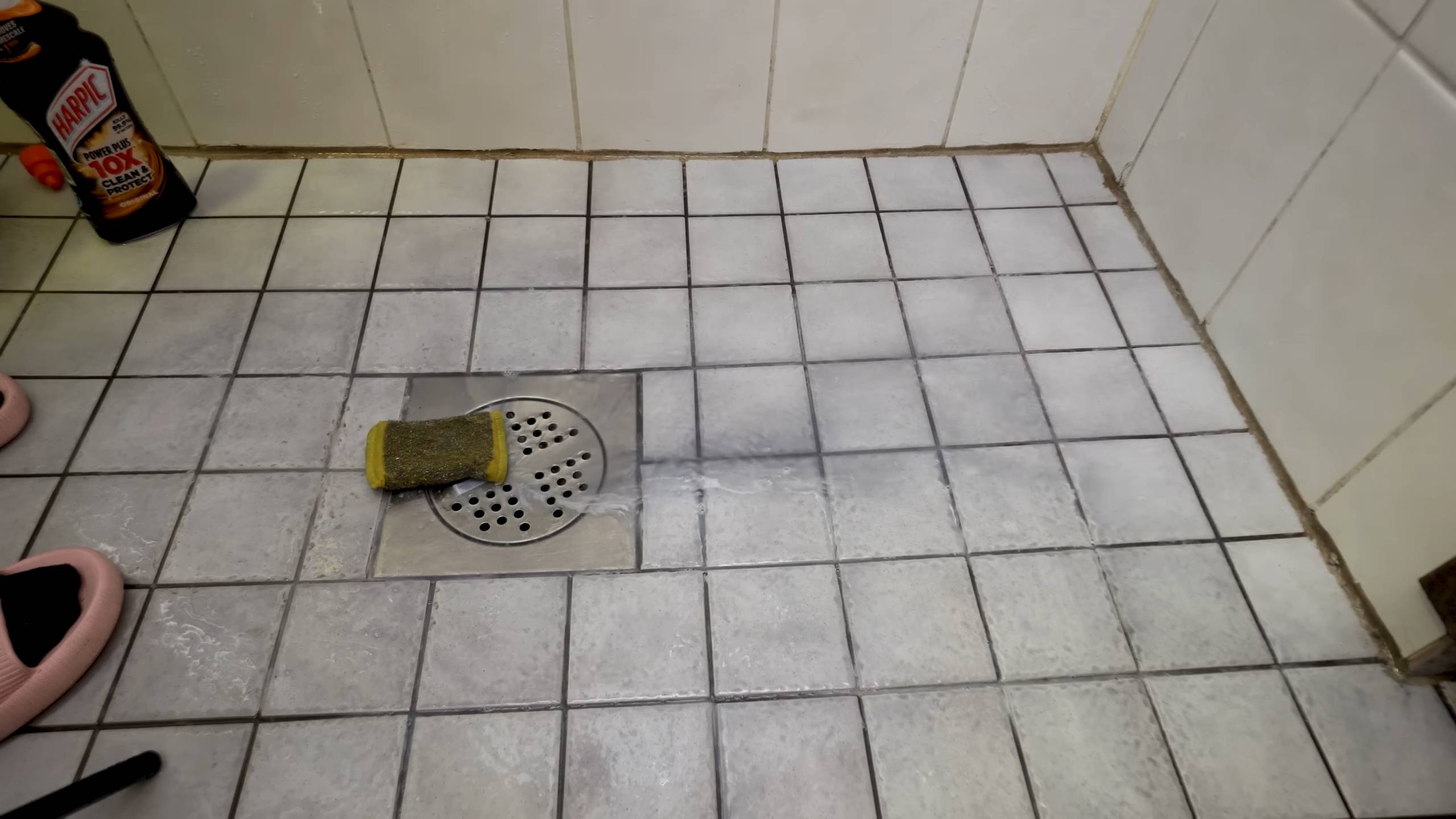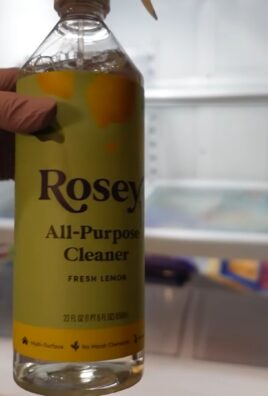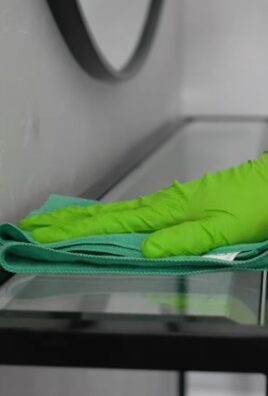Acid Toilet Cleaning Tips: Are you tired of stubborn toilet stains that just won’t budge, no matter how hard you scrub? I know the feeling! It’s frustrating to spend time and energy cleaning, only to be left with a less-than-sparkling result. But don’t worry, I’m here to share some powerful DIY secrets that will transform your toilet cleaning routine.
For generations, households have battled the persistent problem of toilet bowl stains. From ancient civilizations using natural abrasives to modern chemical solutions, the quest for a pristine toilet has been ongoing. While commercial cleaners are readily available, many contain harsh chemicals that can be harmful to both your health and the environment. That’s where these acid toilet cleaning tips come in handy!
This article is your ultimate guide to tackling those tough stains using safe, effective, and often readily available household ingredients. I’ll walk you through simple DIY methods that harness the cleaning power of acids to banish stains, eliminate odors, and leave your toilet bowl looking brand new. Why spend a fortune on expensive cleaners when you can achieve professional-level results with these easy-to-follow hacks? Let’s get started and reclaim the sparkle in your bathroom!

Growing Potatoes in Containers: A Bountiful Harvest on Your Patio!
Hey there, fellow gardening enthusiasts! I’m so excited to share my tried-and-true method for growing potatoes in containers. It’s a fantastic way to enjoy fresh, homegrown potatoes even if you don’t have a sprawling garden. Trust me, there’s nothing quite like digging into a pot and unearthing your own little treasure trove of spuds!
Why Grow Potatoes in Containers?
Before we dive in, let’s talk about why container gardening is such a great option for potatoes:
* Space-Saving: Perfect for balconies, patios, or small yards.
* Control: You have complete control over the soil quality and drainage.
* Pest and Disease Management: Easier to monitor and manage pests and diseases.
* Early Harvest: Container-grown potatoes often mature faster than those in the ground.
* Easy Harvesting: No more back-breaking digging! Just tip the container and collect your potatoes.
What You’ll Need
Here’s a list of everything you’ll need to get started. Don’t worry, it’s not too extensive!
* Large Container: A container at least 15 gallons in size is ideal. Think large buckets, trash cans (with drainage holes!), or even grow bags. The bigger, the better!
* Seed Potatoes: These are potatoes specifically grown for planting. You can find them at your local garden center. Choose certified disease-free varieties.
* Potting Mix: A well-draining potting mix is crucial. Avoid using garden soil, as it can become compacted in containers. I like to use a mix of compost, peat moss, and perlite.
* Fertilizer: A balanced slow-release fertilizer will provide your potatoes with the nutrients they need.
* Watering Can or Hose: For regular watering.
* Trowel or Shovel: For planting and adding soil.
* Optional: Mulch (straw or wood chips) to help retain moisture.
Choosing the Right Seed Potatoes
Selecting the right seed potatoes is key to a successful harvest. Here’s what to look for:
* Variety: Consider your climate and taste preferences. Some popular varieties for containers include Yukon Gold, Red Pontiac, and Fingerling potatoes.
* Certified Disease-Free: This is essential to prevent diseases from affecting your crop.
* Size: Smaller seed potatoes (about the size of a golf ball) can be planted whole. Larger potatoes can be cut into pieces, making sure each piece has at least one or two “eyes” (the little buds that will sprout).
* Chitting (Sprouting): Chitting your seed potatoes before planting can give them a head start. To do this, place them in a cool, bright location for a few weeks until they develop short, green sprouts.
Step-by-Step Planting Guide
Alright, let’s get our hands dirty! Here’s how to plant your seed potatoes in containers:
1. Prepare the Container: Make sure your container has adequate drainage holes. If not, drill some! Then, add a layer of potting mix to the bottom of the container, about 4-6 inches deep.
2. Plant the Seed Potatoes: Place the seed potatoes on top of the soil, with the “eyes” facing upwards. If you’re using cut pieces, allow the cut surfaces to dry for a day or two before planting to prevent rot. Space the seed potatoes about 8-10 inches apart if you’re planting multiple potatoes in the same container.
3. Cover with Soil: Cover the seed potatoes with another 4-6 inches of potting mix. Gently water the soil until it’s moist but not soggy.
4. Watering and Sunlight: Place the container in a location that receives at least 6-8 hours of sunlight per day. Water regularly, keeping the soil consistently moist. Avoid overwatering, as this can lead to rot.
The “Hilling” Process: Maximizing Your Potato Yield
This is where the magic happens! “Hilling” is the process of adding more soil to the container as the potato plants grow. This encourages the plants to produce more potatoes along the stems.
1. Wait for Growth: Once the potato plants have grown about 6-8 inches tall, it’s time to start hilling.
2. Add More Soil: Add a layer of potting mix around the base of the plants, covering the lower portion of the stems. Leave the top few inches of the plants exposed.
3. Repeat: Continue hilling every few weeks as the plants grow, until the container is almost full.
4. Water After Hilling: Water the soil thoroughly after each hilling session.
Caring for Your Potato Plants
Here are some tips for keeping your potato plants healthy and productive:
* Watering: Water regularly, especially during hot, dry weather. Check the soil moisture by sticking your finger into the soil. If it feels dry an inch or two below the surface, it’s time to water.
* Fertilizing: Feed your potato plants with a balanced fertilizer every few weeks. Follow the instructions on the fertilizer package.
* Pest Control: Keep an eye out for pests like aphids, potato beetles, and flea beetles. Handpick them off the plants or use an organic insecticide if necessary.
* Disease Prevention: Ensure good air circulation around the plants to prevent fungal diseases. Avoid overhead watering, as this can promote disease.
* Sunlight: Potatoes need plenty of sunlight to thrive. Make sure your container is in a sunny location.
When to Harvest Your Potatoes
The moment we’ve all been waiting for! Here’s how to know when your potatoes are ready to harvest:
* Flowering: Potato plants typically flower a few weeks after planting. This is a good indication that potatoes are forming underground.
* Foliage: As the potatoes mature, the foliage will start to turn yellow and die back. This is a sign that it’s time to harvest.
* Timing: You can harvest “new potatoes” (small, tender potatoes) a few weeks after flowering. For larger, more mature potatoes, wait until the foliage has completely died back.
Harvesting Your Container-Grown Potatoes
Harvesting potatoes from containers is incredibly easy!
1. Stop Watering: Stop watering the plants a week or two before harvesting to allow the potatoes to dry out slightly.
2. Tip the Container: Gently tip the container onto its side and carefully remove the soil.
3. Collect Your Potatoes: Sift through the soil and collect your potatoes.
4. Cure (Optional): If you plan to store your potatoes for a longer period, you can cure them by placing them in a cool, dark, and well-ventilated location for a week or two. This will help them develop a thicker skin and prevent spoilage.
Troubleshooting Common Problems
Even with the best care, you might encounter some problems along the way. Here are some common issues and how to address them:
* Potato Scab: This is a common fungal disease that causes rough, scabby patches on the potatoes. To prevent potato scab, use disease-free seed potatoes and avoid overwatering.
* Potato Beetles: These pests can quickly defoliate your potato plants. Handpick them off the plants or use an organic insecticide.
* Aphids: These tiny insects can suck the sap from your potato plants. Spray them with a strong stream of water or use an insecticidal soap.
* Rot: Overwatering can lead to rot. Make sure your container has adequate drainage and avoid overwatering.
Enjoying Your Homegrown Potatoes
Congratulations! You’ve successfully grown potatoes in containers. Now it’s time to enjoy the fruits (or rather, vegetables) of your labor.
* Freshly Harvested: New potatoes are delicious simply boiled or steamed with a little butter and herbs.
* Roasted: Roasted potatoes are a classic side dish. Toss them with olive oil, salt, pepper, and your favorite herbs.
* Mashed: Mashed potatoes are a comfort food staple. Add butter, milk, and seasonings to taste.
* Potato Salad: Potato salad is a perfect dish for picnics and barbecues.
Tips for a Superb Potato Harvest
Here are some extra tips to help you maximize your potato yield:
* Rotate Your Crops: Avoid planting potatoes in the same container year after year. This can help prevent soilborne diseases.
* Use High-Quality Potting Mix: A well-draining potting mix is essential for healthy potato growth.
* Provide Adequate Sunlight: Potatoes need at least 6-8 hours of sunlight per day.
* Water Regularly: Keep the soil consistently moist, but avoid overwatering.
* Fertilize Regularly

Conclusion
So, there you have it! Mastering the art of acid toilet cleaning doesn’t have to be a daunting task. By understanding the power of the right approach and taking necessary precautions, you can achieve a sparkling clean toilet bowl that’s free from stubborn stains and mineral buildup. This DIY trick is a must-try because it offers a cost-effective and efficient alternative to expensive commercial cleaners, often packed with harsh chemicals. Not only will you save money, but you’ll also gain greater control over the ingredients you’re using in your home, potentially reducing exposure to harmful substances.
But the benefits don’t stop there. A properly cleaned toilet contributes to a healthier and more hygienic bathroom environment. By removing bacteria and grime, you’re minimizing the risk of unpleasant odors and the spread of germs. This is especially important in households with children or individuals with compromised immune systems.
Now, let’s talk about variations and suggestions. While hydrochloric acid is a powerful cleaning agent, it’s crucial to handle it with extreme care. Always wear appropriate protective gear, including gloves, eye protection, and a mask, and ensure adequate ventilation. If you’re uncomfortable working with such a strong acid, consider exploring milder alternatives like citric acid or vinegar, although they may require more soaking time and scrubbing. Another variation involves using a pumice stone to gently scrub away stubborn stains after the acid treatment. Remember to wet the pumice stone thoroughly before use to avoid scratching the porcelain.
For those dealing with particularly tough stains, you can pre-treat the area with a baking soda paste before applying the acid solution. This can help loosen the buildup and make the cleaning process more effective. You can also experiment with adding a few drops of essential oils, such as tea tree or eucalyptus, to the cleaning solution for a more pleasant scent. However, be mindful of potential reactions and always test the solution in an inconspicuous area first.
Ultimately, the key to successful acid toilet cleaning lies in understanding the properties of the cleaning agent, following safety precautions diligently, and adapting the technique to suit your specific needs and preferences. We encourage you to try this DIY trick and experience the satisfaction of a sparkling clean toilet bowl. Don’t be afraid to experiment with different variations and find what works best for you.
We’re confident that you’ll be amazed by the results. But more importantly, we want to hear about your experience! Share your tips, tricks, and before-and-after photos in the comments section below. Let’s create a community where we can learn from each other and master the art of acid toilet cleaning together. Your feedback is invaluable, and it will help us refine this guide and provide even better advice to our readers. So, go ahead, give it a try, and let us know what you think! We can’t wait to hear from you.
Frequently Asked Questions (FAQ)
What type of acid is best for cleaning toilets?
The most commonly used acid for toilet cleaning is hydrochloric acid (HCl), also known as muriatic acid. It’s highly effective at dissolving mineral deposits, rust stains, and other stubborn buildup. However, it’s crucial to handle hydrochloric acid with extreme caution due to its corrosive nature. Always wear appropriate protective gear, including gloves, eye protection, and a mask, and ensure adequate ventilation. If you’re uncomfortable using hydrochloric acid, consider milder alternatives like citric acid or vinegar, although they may not be as effective for severe stains.
Is it safe to use acid in my toilet?
Using acid in your toilet can be safe if you follow proper safety precautions. Hydrochloric acid is a corrosive substance and can cause burns to the skin and eyes, as well as respiratory irritation. Always wear gloves, eye protection, and a mask when handling acid. Ensure adequate ventilation by opening windows or using a fan. Never mix acid with other cleaning products, especially bleach, as this can create toxic fumes. If you’re unsure about using acid, consider milder alternatives or consult a professional cleaner.
How often should I use acid to clean my toilet?
Using acid to clean your toilet should be done sparingly, typically only when you have stubborn stains or mineral buildup that cannot be removed with regular cleaning methods. Overuse of acid can damage the porcelain of your toilet bowl and potentially harm the plumbing system. A good rule of thumb is to use acid no more than once every few months, or only when absolutely necessary. For regular cleaning, stick to non-abrasive cleaners and a toilet brush.
What should I do if I spill acid while cleaning the toilet?
If you spill acid while cleaning the toilet, immediately take the following steps:
1. **Protect yourself:** Put on gloves, eye protection, and a mask if you haven’t already.
2. **Ventilate the area:** Open windows and doors to ensure adequate ventilation.
3. **Neutralize the acid:** Pour baking soda over the spill to neutralize the acid. The baking soda will react with the acid, creating carbon dioxide and water.
4. **Clean up the spill:** Once the reaction has subsided, use a damp cloth or mop to clean up the spill. Rinse the area thoroughly with water.
5. **Dispose of the waste properly:** Dispose of the contaminated cloth or mop head in a sealed plastic bag.
If you get acid on your skin or in your eyes, immediately flush the affected area with plenty of water for at least 15 minutes and seek medical attention.
Can I use acid to clean other parts of my bathroom?
While acid can be effective for cleaning certain surfaces in your bathroom, it’s generally not recommended for use on all surfaces. Acid can damage or discolor certain materials, such as marble, granite, and some types of tile. It’s also not suitable for use on metal surfaces, as it can cause corrosion. If you’re considering using acid to clean other parts of your bathroom, test it in an inconspicuous area first to ensure that it doesn’t cause any damage. For most bathroom surfaces, non-abrasive cleaners and a damp cloth are sufficient.
What are some alternatives to using acid for toilet cleaning?
If you’re looking for alternatives to using acid for toilet cleaning, here are a few options:
* **Vinegar:** Vinegar is a mild acid that can be effective at removing stains and mineral buildup. Pour a cup of vinegar into the toilet bowl and let it sit for several hours or overnight before scrubbing.
* **Citric acid:** Citric acid is another mild acid that can be used to clean toilets. Mix a few tablespoons of citric acid with water and pour it into the toilet bowl. Let it sit for a few hours before scrubbing.
* **Baking soda and vinegar:** This combination creates a fizzing action that can help loosen stains and buildup. Sprinkle baking soda into the toilet bowl, then pour vinegar over it. Let it fizz for a few minutes before scrubbing.
* **Pumice stone:** A pumice stone can be used to gently scrub away stubborn stains. Wet the pumice stone thoroughly before use to avoid scratching the porcelain.
* **Commercial toilet bowl cleaners:** There are many commercial toilet bowl cleaners available that are effective at removing stains and buildup. Choose a cleaner that is specifically designed for toilets and follow the instructions on the label.
How can I prevent stains and buildup in my toilet?
Preventing stains and buildup in your toilet is easier than removing them. Here are a few tips:
* **Flush regularly:** Flush the toilet after each use to prevent waste from sitting in the bowl and causing stains.
* **Clean regularly:** Clean your toilet at least once a week with a non-abrasive cleaner and a toilet brush.
* **Use a toilet bowl cleaner:** Use a toilet bowl cleaner regularly to help prevent stains and buildup.
* **Install a water softener:** If you have hard water, consider installing a water softener to reduce mineral buildup in your toilet.
* **Avoid using harsh chemicals:** Avoid using harsh chemicals like bleach or drain cleaners in your toilet, as they can damage the porcelain and harm the plumbing system.




Leave a Comment